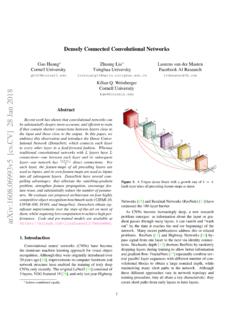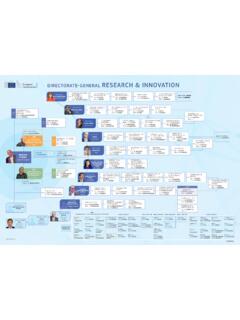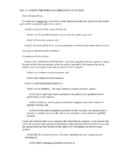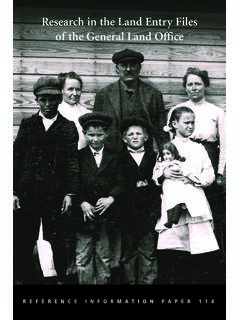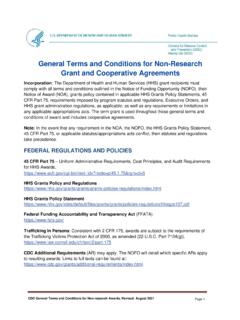Transcription of Mastering Chess and Shogi by Self-Play with a General …
1 Mastering Chess and Shogi by Self-Play with aGeneral Reinforcement Learning AlgorithmDavid Silver,1 Thomas Hubert,1 Julian Schrittwieser,1 Ioannis Antonoglou,1 Matthew Lai,1 Arthur Guez,1 Marc Lanctot,1 Laurent Sifre,1 Dharshan Kumaran,1 Thore Graepel,1 Timothy Lillicrap,1 Karen Simonyan,1 Demis Hassabis11 DeepMind, 6 Pancras Square, London N1C 4AG. These authors contributed equally to this game of Chess is the most widely-studied domain in the history of artificial intel-ligence. The strongest programs are based on a combination of sophisticated search tech-niques, domain-specific adaptations, and handcrafted evaluation functions that have beenrefined by human experts over several decades.
2 In contrast, theAlphaGo Zeroprogramrecently achieved superhuman performance in the game of Go, bytabula rasareinforce-ment learning from games of Self-Play . In this paper, we generalise this approach intoa singleAlphaZeroalgorithm that can achieve,tabula rasa, superhuman performance inmany challenging domains. Starting from random play, and given no domain knowledgeexcept the game rules,AlphaZeroachieved within 24 hours a superhuman level of play inthe games of Chess and Shogi (Japanese Chess ) as well as Go, and convincingly defeated aworld-champion program in each study of computer Chess is as old as computer science itself. Babbage, Turing, Shan-non, and von Neumann devised hardware, algorithms and theory to analyse and play the gameof Chess .
3 Chess subsequently became the grand challenge task for a generation of artificial intel-ligence researchers, culminating in high-performance computer Chess programs that perform atsuperhuman level (9, 13). However, these systems are highly tuned to their domain, and cannotbe generalised to other problems without significant human long-standing ambition of artificial intelligence has been to create programs that can in-stead learn for themselves from first principles (26). Recently, theAlphaGo Zeroalgorithmachieved superhuman performance in the game of Go, by representing Go knowledge usingdeep convolutional neural networks (22, 28), trained solely by reinforcement learning fromgames of Self-Play (29).
4 In this paper, we apply a similar but fully generic algorithm, which we1 [ ] 5 Dec 2017callAlphaZero, to the games of Chess and Shogi as well as Go, without any additional domainknowledge except the rules of the game, demonstrating that a General -purpose reinforcementlearning algorithm can achieve,tabula rasa, superhuman performance across many landmark for artificial intelligence was achieved in 1997 when Deep Blue defeated the hu-man world champion (9). Computer Chess programs continued to progress steadily beyond hu-man level in the following two decades. These programs evaluate positions using features hand-crafted by human grandmasters and carefully tuned weights, combined with a high-performancealpha-beta search that expands a vast search tree using a large number of clever heuristics anddomain-specific adaptations.
5 In the Methods we describe these augmentations, focusing on the2016 Top Chess Engine Championship (TCEC) world-championStockfish(25); other strongchess programs, including Deep Blue, use very similar architectures (9, 21). Shogi is a significantly harder game, in terms of computational complexity, than Chess (2,14): it is played on a larger board, and any captured opponent piece changes sides and may sub-sequently be dropped anywhere on the board. The strongest Shogi programs, such as ComputerShogi Association (CSA) world-championElmo, have only recently defeated human champi-ons (5). These programs use a similar algorithm to computer Chess programs, again based on ahighly optimised alpha-beta search engine with many domain-specific is well suited to the neural network architecture used inAlphaGobecause the rules ofthe game are translationally invariant (matching the weight sharing structure of convolutionalnetworks), are defined in terms oflibertiescorresponding to the adjacencies between pointson the board (matching the local structure of convolutional networks), and are rotationally andreflectionally symmetric (allowing for data augmentation and ensembling).
6 Furthermore, theaction space is simple (a stone may be placed at each possible location), and the game outcomesare restricted to binary wins or losses, both of which may help neural network and Shogi are, arguably, less innately suited toAlphaGo s neural network architec-tures. The rules are position-dependent ( pawns may move two steps forward from thesecond rank and promote on the eighth rank) and asymmetric ( pawns only move forward,and castling is different on kingside and queenside). The rules include long-range interactions( the queen may traverse the board in one move, or checkmate the king from the far sideof the board). The action space for Chess includes all legal destinations for all of the players pieces on the board; Shogi also allows captured pieces to be placed back on the board.
7 Bothchess and Shogi may result in draws in addition to wins and losses; indeed it is believed that theoptimal solution to Chess is a draw (17, 20, 30).TheAlphaZeroalgorithm is a more generic version of theAlphaGo Zeroalgorithm that wasfirst introduced in the context of Go (29). It replaces the handcrafted knowledge and domain-specific augmentations used in traditional game-playing programs with deep neural networksand atabula rasareinforcement learning of a handcrafted evaluation function and move ordering heuristics,AlphaZeroutilisesa deep neural network(p,v) =f (s)with parameters . This neural network takes the board po-sitionsas an input and outputs a vector of move probabilitiespwith componentspa=Pr(a|s)2for each actiona, and a scalar valuevestimating the expected outcomezfrom positions,v E[z|s].
8 AlphaZerolearns these move probabilities and value estimates entirely from Self-Play ; these are then used to guide its of an alpha-beta search with domain-specific enhancements,AlphaZerouses a General -purpose Monte-Carlo tree search (MCTS) algorithm. Each search consists of a series of simu-lated games of Self-Play that traverse a tree from rootsrootto leaf. Each simulation proceeds byselecting in each statesa moveawith low visit count, high move probability and high value(averaged over the leaf states of simulations that selectedafroms) according to the currentneural networkf . The search returns a vector representing a probability distribution overmoves, either proportionally or greedily with respect to the visit counts at the root parameters of the deep neural network inAlphaZeroare trained by Self-Play reinforce-ment learning, starting from randomly initialised parameters.
9 Games are played by selectingmoves for both players by MCTS,at t. At the end of the game, the terminal positionsTisscored according to the rules of the game to compute the game outcomez: 1for a loss,0fora draw, and+1for a win. The neural network parameters are updated so as to minimise theerror between the predicted outcomevtand the game outcomez, and to maximise the similarityof the policy vectorptto the search probabilities t. Specifically, the parameters are adjustedby gradient descent on a loss functionlthat sums over mean-squared error and cross-entropylosses respectively,(p,v) =f (s),l= (z v)2 >logp+c|| ||2(1)wherecis a parameter controlling the level ofL2weight regularisation.
10 The updated parametersare used in subsequent games of described in this paper differs from the originalAlphaGo Zeroalgorithm in several Zeroestimates and optimises the probability of winning, assuming binary estimates and optimises the expected outcome, taking account ofdraws or potentially other rules of Go are invariant to rotation and reflection. This fact was exploited inAlphaGoandAlphaGo Zeroin two ways. First, training data was augmented by generating 8 symmetriesfor each position. Second, during MCTS, board positions were transformed using a randomlyselected rotation or reflection before being evaluated by the neural network, so that the Monte-Carlo evaluation is averaged over different biases.

![arXiv:0706.3639v1 [cs.AI] 25 Jun 2007](/cache/preview/4/1/3/9/3/1/4/b/thumb-4139314b93ef86b7b4c2d05ebcc88e46.jpg)
![arXiv:1301.3781v3 [cs.CL] 7 Sep 2013](/cache/preview/4/d/5/0/4/3/4/0/thumb-4d504340120163c0bdf3f4678d8d217f.jpg)
![@google.com arXiv:1609.03499v2 [cs.SD] 19 Sep 2016](/cache/preview/c/3/4/9/4/6/9/b/thumb-c349469b499107d21e221f2ac908f8b2.jpg)





